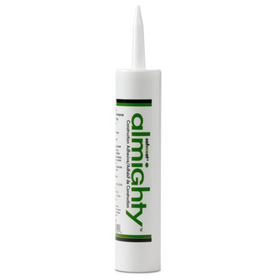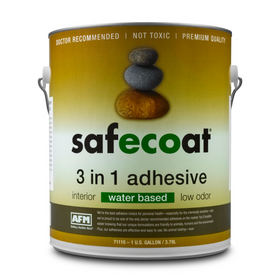
Vernacular Architecture: What We Can Learn From It?
Last Updated: Apr 7, 2025People and cultures around the world have been building homes for as long as humanity has existed. From tiny caves adapted to make life liveable for our earlier human ancestors to beautiful adobe haciendas made from the mud beneath our feet, vernacular architecture has been a uniquely human response to fashioning dwellings in the local context and the availability of local materials.
Modern-day construction is mainly dependent on the global supply chain of products shipped across the world. In contrast, vernacular traditions arose from local knowledge of the specific and contextual conditions near the site's location. Few Americans will be willing to return to mud huts, teepees, or longhouses (and building codes will most likely make that an impossibility). But, we would benefit from seeking out the wisdom and ancestral knowledge inherent to vernacular architecture.
Table of Contents
- What is Vernacular Architecture?
- How Modern-Day Architectural Design Overshadows
- How Can You Integrate Vernacular and Modern Architecture?
- What Modern Buildings and Architects Use Vernacular Architecture?
What is Vernacular Architecture?
Vernacular architecture is a building style designed around local needs, customs, and available materials. Some experts maintain that vernacular architecture is characterized by buildings constructed by people without formal studies in architecture. However, local builders often have generations of regional knowledge passed down through a series of apprenticeships.
While modern-day construction is often focused on aesthetic concerns and designed for comfort and luxury, vernacular architecture tends to be more pragmatic, focusing on the functional liveability of a home.
Author and architect Ronald Brunskill defines vernacular architecture as structures designed by untrained amateurs. He states that a vernacular builder would be guided by local conventions and would pay little attention to fashionable building trends, and aesthetic considerations are minimal. Brunskill notes that a building's function is the dominant factor in vernacular architecture and that it would be built with local materials, almost exclusively. Imported materials are seldom used.
How Modern-Day Architectural Design Overshadows
Buildings account for 36 percent of the world's energy consumption and 39 percent of energy-related carbon dioxide emissions. Much of this excessive energy expenditure is because of the globalization of supply chains. As such, modern homes in America might source their 2x4s from Canadian-grown pine trees, their hardwood flooring from Mahogany in Africa, and marble countertops from Italy.
The globalization of our society has also allowed modern, western construction techniques to dominate and, in essence, replace vernacular traditions. Unfortunately, much modern-day construction is both energy-intensive and energy inefficient.
How Can You Integrate Vernacular and Modern Architecture?
Vernacular architectural traditions have a lot that they can teach modern-day architects and home contractors. Below, we look at four of the most important lessons we can learn from vernacular architectural traditions and think about how to integrate them into modern architecture.

Understand the Elements
In the South Pacific island of Tonga, traditional homes were built with curved roofs. While the outsider might be impressed by these unconventional roofs' aesthetic beauty, they actually protect the home from cyclonic winds that battered the island every year. The vernacular architecture of Tonga was designed around a fundamental understanding of how the natural elements affected the landscape and the homes situated therein. Architects and construction teams today would do well to take an in-depth look at how the elements affect the proposed home site. This focus on the local environment can be useful for several purposes, including energy-efficiency considerations and passive solar design.

Local Materials for Increased Insulation
One common misunderstanding is that vernacular architecture didn't utilize insulation. While traditional homes might not have incorporated foam or rolls of fiberglass insulation, they certainly did find ways to insulate their homes. In the highlands of the Andes Mountains, the traditional architecture used hollow reeds embedded into the walls. The reeds (with lots of space on the inside) vastly increased the homes' insulation properties. Similarly, in the American Midwest, farmers used to build straw bale homes left over from the wheat harvest. Foam insulation and other conventional spray-type insulations used in modern-day construction can lead to dangerous chemical exposure. Using locally appropriate natural materials for insulation purposes is an important lesson that vernacular architecture leaves us.

Natural Roofing Options
In Norway and other Scandinavian countries, houses used to be built with a sod roof. This roof type allowed the homes to naturally blend into the countryside while also offering increased thermal performance. Today, most roofing options depend on mining or the petrochemical industry. Finding ways to use local materials for roofing alternatives can reduce the embodied energy of a home drastically. For example, reviving the terra cotta tile industry might be locally appropriate anywhere where clay soil is abundant.
Integrating with Local Landscape
One common, though unfortunate, aspect of modern-day construction is that there is little to no connection to the actual house site. Water, energy, and other "inputs" are brought to the home by municipal utilities, often sourced from hundreds of miles away. Similarly, greywater and black water are usually flushed down the toilet or drains and into a sewer system for the region to manage. In developing areas of the world, where infrastructure is scarce, most homes have to find ways to integrate their homes into the local landscape. Without the "benefit" of a sewer system, vernacular architecture deliberates on the best way to recycle greywater into the landscape. Reconnecting the homes we live in into the land where they are built is an essential component of sustainable building.
What Modern Buildings and Architects Use Vernacular Architecture?
Increasing interest in sustainable home design has led many architectural firms to embrace the most modern and state-of-the-art energy-efficient designs and technologies. However, other architects have begun to realize that vernacular architectural designs and strategies are also warehouses of information, wisdom, and practical knowledge of how homes can be best suited to their particular regions.
Below, we look at a few architectural firms that have openly embraced vernacular building styles. They have incorporated this traditional wisdom with the energy-efficient advancements of newer technologies and building products.
Tobias Roberts
Tobias runs an agroecology farm and a natural building collective in the mountains of El Salvador. He specializes in earthen construction methods and uses permaculture design methods to integrate structures into the sustainability of the landscape.













